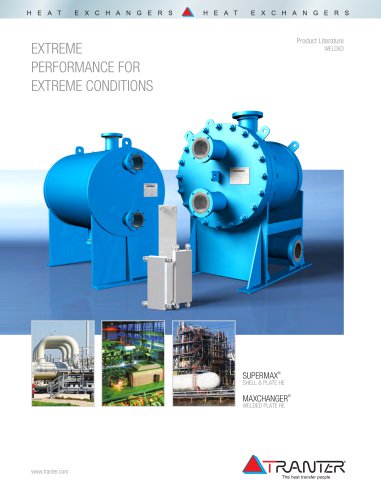
Catalog excerpts
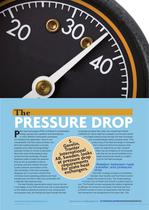
PRESSURE DROP Plate heat exchangers (PHE) contribute to considerable energy savings both upstream and downstream in many different hydrocarbon processes, but whatever the application, there is one characteristic that they nearly all share. Any technical meeting between a process engineer and a heat exchange design specialist is likely to involve a discussion about the value of the pressure drop across the heat exchanger. Process engineers prefer to keep the pressure drop as low as possible to reduce pumping cost and maintain the right suction pressure downstream of the heat exchanger, while heat exchanger designers aim to provide a solution that minimises future operating problems and heat transfer area and that is often only achievable with a relatively high pressure drop. The heat transfer requirements clearly have to be met in the design of any PHE and the way this is done depends on the relative importance placed on cost, physical size and pressure drop. By forcing the fluids through the heat exchanger at higher flow rates, the overall heat transfer coefficient (U value) might be increased, but this also results in a higher pressure drop through the heat exchanger and correspondingly higher pumping costs. If the surface area of the heat exchanger is increased the U value and hence the pressure drop does not need to be so high; however, there may be limitations on the physical size that can be accommodated and a larger physical size results in a higher cost for the heat exchanger. Relation between heat Reynolds' analogy is based on similarities between heat transfer and fluid friction (which causes the pressure drop). The simple analogy is correct only for fluids with Prandtl numbers equal to one. The Prandtl number expresses the relative magnitude of diffusion of momentum and heat in the fluid and thus a Prandtl number of one is an assumption that the heat and momentum are transported at the same rate. This Reprinted from February2009 HYDROCARBOh ENGINEERING
Open the catalog to page 1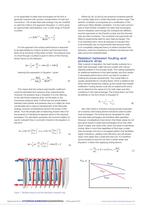
is not applicable to plate heat exchangers as the flow is generally turbulent with random transportation of heat and momentum. The simple Reynolds analogy may be modified to yield the Colburn (j/f) approach (Equation 1), which gives an approximate rationalisation over a wide range of Prandtl For this approach the surface performance is assumed to be describable by Colburn (j) factor and Fanning friction factor (f) as functions of Reynolds number. The pressure drop of a fluid through a surface is given in terms of the Fanning friction factor by the definition: Inserting this expression in...
Open the catalog to page 2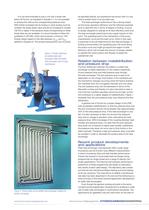
It is not recommended to size a unit with a shear rate below 50 Pa but, as indicated in Equation 7, it is not possible to achieve this without the corresponding pressure drop. With further increased risk for fouling or when fouling must be avoided, the shear stress value should be increased to at least 100 Pa or higher. If the pressure drops corresponding to these shear rates are not available, it is recommended to follow the guidelines in API 662, which recommends a minimum 10% fouling margin based on the ratio between Uo|ean and Udirty defined in Equation 6. The actual fouling factors can...
Open the catalog to page 3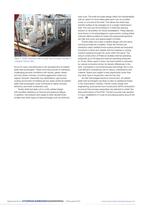
Figure 4. Tranter Supermax shell and plate heat exchanger mounted in a propane recovery skid. focus for many manufacturers is the development of welded plate heat exchangers. These units have proven to withstand challenging process conditions with liquids, gases, steam and two phase mixtures, including aggressive media and organic solvents. Especially two applications, gas suction cooling and bunker oil heating are two areas where all welded plate heat exchangers could contribute to higher process efficiency and lower investment cost. Tranter shell and plate unit is a fully welded design...
Open the catalog to page 4All Tranter catalogs and technical brochures
Archived catalogs
-
Shell-and-Plate
3 Pages
-
SUPERCHANGER®
28 Pages
-
Thermofit
4 Pages
-
Parts & Service Brochure
6 Pages
-
Company Brochure English
8 Pages
-
Oil & Gas brochure English
8 Pages
-
Service English
8 Pages
-
Gasketed PHE English
8 Pages
-
Product Brochure English
8 Pages
-
Prime Surface Heat Exchangers
10 Pages













